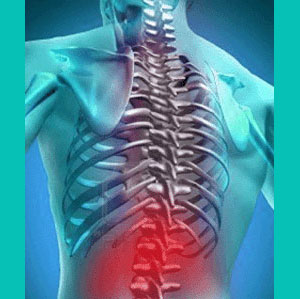
Herniated disc groin pain is a possible consequence of an upper lumbar disc pathology. The groin is served by the nerve roots from T12, L1 and L2 in most people, although the genitals are served by the lower sacral nerve roots.
Groin pain is most often blamed on herniations at L4/L5 and L5/S1 which is not always consistent with the symptoms expected, since the nerves involved at those levels do not innervate the groin.
This article will detail why groin pain may or may not be linked to lumbar disc concerns, such as bulges or ruptures. We will expose the diagnoses often made incorrectly and also detail the diagnoses which might be spot on when it comes to sourcing groin symptoms.
Groin Pain from a Herniated Disc
If a significant herniation does exist at T12/L1 or L1/L2, it is possible for the offending disc matter to be impinging on the nerve roots which serve this region. In these cases, foraminal stenosis would have to be proven using advanced diagnostic imaging, like MRI. For herniations theorized to be causing foraminal stenosis at other levels, the pain is likely to be unrelated, which is not surprising, since most herniated discs are asymptomatic to begin with.
Central herniated discs which cause canal stenosis affecting the entire cauda equina structure might compress some or all of the lower sacral nerves at a higher level, before they exit the spine. In these circumstances, genital pain may be enacted by lumbar pathologies virtually anywhere in the lumbar region.
A great number of groin and genital pain conditions that I see might be the result of ischemia and are directly enacted by a psychosomatic process. In these cases, there are no structural causes at all and any which have been identified are purely coincidental to the pain suffered. This theory is supported by the incredibly poor curative statistics for herniated disc treatments used to resolve groin pain, particularly in the middle and lower lumbar levels.
Severe Herniated Disc Groin Pain
In cases of severe central spinal stenosis or canal narrowing issues in the sacral spine, there can be serious health risks which may manifest themselves in the genitals and groin.
Cauda equina syndrome is a very rare, but serious condition which can truly have dire effects if not treated expeditiously. In many cases, numbness and dysfunction are manifest in the groin and anus and it is usual for patients to lose control of the bladder or bowels. All suspected cauda equina symptoms should be reported to a qualified doctor or local emergency room immediately for evaluation.
Herniated Disc Groin Pain Advisory
Groin pain is not a usual symptomatic expression, but does exist in some patients. Groin discomfort is unfortunately often linked to mindbody issues and may stem from physical or sexual abuse, bad relationships or a host of other less than obvious emotional sources. It may sound odd, but even though the pain is physical and experienced 100% in the actual body, the root source may reside in the subconscious mind. This also explains why so few groin conditions are successfully diagnosed and treated using the structural model of pain.
If your groin pain is chronic and puzzling to you doctor, it may be worth investigating knowledge therapy as a potential alternative approach to care. I would certainly endorse this path before acting on any surgical recommendation, for sure.
Herniated Disc > Herniated Disc Pain > Herniated Disc Groin Pain




